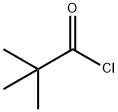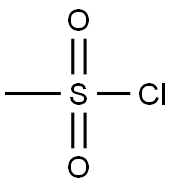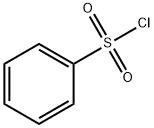Octanoyl chloride
Synonym(s):Capryloyl chloride
- CAS NO.:111-64-8
- Empirical Formula: C8H15ClO
- Molecular Weight: 162.66
- MDL number: MFCD00000766
- EINECS: 203-891-6
- SAFETY DATA SHEET (SDS)
- Update Date: 2025-09-25 17:15:13

What is Octanoyl chloride?
Chemical properties
clear liquid
The Uses of Octanoyl chloride
Octanoyl chloride is used to produce adhesives. It is used as an acylating agent for a variety of compounds such as sugars (e.g. Sucrose, aromatic compounds (e.g. Anisole and monoglycerides.
The Uses of Octanoyl chloride
Applications of octanoyl chloride include:
- Synthesis of (R)-2-propyloctanoic acid, a therapeutic agent for Alzheimer′s disease.
- Synthesis of a variety of N-n-octyl-D-gluconamide based organogels.
- Building 2-heptylbenzo[d]thiazole moiety to synthesize conjugated copolymer with fluorine, as cathode interlayer in inverted polymer solar cells (PSCs).
- Octanoyl chloride is one of the essential precursors in the total synthesis of (?)-mandelalide L, a marine macrolide that display significant cytotoxicity against human cancer cell lines.
Preparation
Diphosgene (108.8 g) was added to a mixture of octanoic acid (144.2 g) and DMF (1.5 L) at 70 C°. The mixture was left to stand for 1 h, and then nitrogen was bubbled through it for 30 min at 100 C° to give 96.9% of octanoyl chloride (purity 99.99%). Benzoyl chloride and terephthaloyl chloride were similarly prepared.
General Description
Clear colorless to straw-colored liquid with a pungent odor.
Air & Water Reactions
Reacts vigorously with water to form HCl and caprylic acid. Insoluble in water.
Reactivity Profile
Octanoyl chloride is incompatible with bases (including amines), water, alcohols, and with oxidizing agents . May react vigorously or explosively if mixed with diisopropyl ether or other ethers in the presence of trace amounts of metal salts [J. Haz. Mat., 1981, 4, 291].
Fire Hazard
Octanoyl chloride is combustible.
Properties of Octanoyl chloride
| Melting point: | -63 °C |
| Boiling point: | 195 °C (lit.) |
| Density | 0.953 g/mL at 25 °C (lit.) |
| vapor pressure | 2.5 mm Hg ( 20 °C) |
| refractive index | n |
| Flash point: | 177 °F |
| storage temp. | −20°C |
| solubility | soluble in Chloroform, Methanol |
| form | Liquid |
| color | Clear |
| Odor | pungent odor |
| Water Solubility | REACTS |
| Sensitive | Moisture Sensitive |
| BRN | 635917 |
| Stability: | Moisture sensitive |
| CAS DataBase Reference | 111-64-8(CAS DataBase Reference) |
| NIST Chemistry Reference | Octanoyl chloride(111-64-8) |
| EPA Substance Registry System | Octanoyl chloride (111-64-8) |
Safety information for Octanoyl chloride
| Signal word | Danger |
| Pictogram(s) |
 Corrosion Corrosives GHS05  Skull and Crossbones Acute Toxicity GHS06 |
| GHS Hazard Statements |
H290:Corrosive to Metals H315:Skin corrosion/irritation H317:Sensitisation, Skin H318:Serious eye damage/eye irritation H330:Acute toxicity,inhalation |
| Precautionary Statement Codes |
P234:Keep only in original container. P260:Do not breathe dust/fume/gas/mist/vapours/spray. P280:Wear protective gloves/protective clothing/eye protection/face protection. P302+P352:IF ON SKIN: wash with plenty of soap and water. P305+P351+P338:IF IN EYES: Rinse cautiously with water for several minutes. Remove contact lenses, if present and easy to do. Continuerinsing. |
Computed Descriptors for Octanoyl chloride
Octanoyl chloride manufacturer
JSK Chemicals
A.B. Enterprises
New Products
4,4-Difluoropiperidine hydrochloride tert-butyl 9-methoxy-3-azaspiro[5.5]undecane-3-carboxylate Indole Methyl Resin N-Isopropylurea N,N-Dicyclohexylcarbodiimide(DCC) MELDRUMS ACID 5-METHYLISOXAZOLE-4-CARBOXYLIC ACID Magnessium Bis glycinate Zinc ascorbate 1-bromo-2-butyne 2-acetamidophenol 9(10H)-anthracenone Erythrosin B, 4-Piperidinopiperidine 2-((4-morpholinophenylamino) (methylthio) methylene) malononitrile 2,4-dihydroxybenzaldehyde 3-(4-morpholinophenylamino)-5-amino-1H-pyrazole-4-carbonitrile Methyl 2-methylquinoline-6-carboxylate 2,6-dichloro-4-nitropyridine 4-Bromo-2-chlorobenzonitrile 2-(benzylamino)acetic acid hydrochloride 4-(tert-Butoxycarbonylamino)but- 2-ynoic acid 3,4-dihydro-2H-benzo[b][1,4]dioxepine 1-Phenyl-1-cycloprppanecarboxylicacidRelated products of tetrahydrofuran








You may like
-
 Octanoyl chloride 98%View Details
Octanoyl chloride 98%View Details -
 111-64-8 octynaoyl chloride 99%View Details
111-64-8 octynaoyl chloride 99%View Details
111-64-8 -
 Octanoyl chloride CAS 111-64-8View Details
Octanoyl chloride CAS 111-64-8View Details
111-64-8 -
 Octanoyl chloride, 99% CAS 111-64-8View Details
Octanoyl chloride, 99% CAS 111-64-8View Details
111-64-8 -
 Octanoyl chloride, 99% CAS 111-64-8View Details
Octanoyl chloride, 99% CAS 111-64-8View Details
111-64-8 -
 n-Octanoyl Chloride CAS 111-64-8View Details
n-Octanoyl Chloride CAS 111-64-8View Details
111-64-8 -
 Octanoyl chloride 99% CAS 111-64-8View Details
Octanoyl chloride 99% CAS 111-64-8View Details
111-64-8 -
 Octanoyl chloride CAS 111-64-8View Details
Octanoyl chloride CAS 111-64-8View Details
111-64-8
